
In this chapter, we will look at some systems having large numbers of tones derived by Pythagorean logic - that is, only from the third harmonic, using a chain of fifths. Our exploration will show the extent to which our nomenclature can be reasonably applied to larger systems. It should be noted that any tuning can be used to good effect, and although we will evaluate systems based on how well thirds and fifths work in each tuning, these intervals need not be the criteria for judging any given tuning. To set the stage, first we recall the structure of the 13 tone system and make a few observations which we can apply to the larger systems.









The diatonic naturals within the 13 tone system will be used to show how some larger systems have special significance; hence we will pay close attention to the end tones of the diatonic naturals F and B, color coded in gray and blue.
Recall that the 13 tone chain of fifths can be shown in the form of a spiral,
reflecting the fact that the tones labeled G and A
and A are very close to the same value, the
G
are very close to the same value, the
G indicating a higher pitch than the
A
indicating a higher pitch than the
A , resulting in the nonintuitive notation
of a higher tone by a lower note on the staff.
, resulting in the nonintuitive notation
of a higher tone by a lower note on the staff.
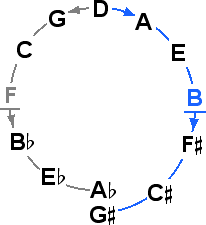
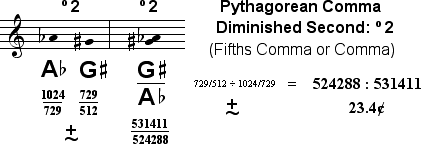
We visit our old friend the Pythagorean Comma, or Fifths Comma, the only comma found in the 13 tone spiral.




In larger systems, we will find this comma occurring more than once.
This 13 tone chain of fifths results in two sizes of halfsteps. The system of seven naturals already includes two diatonic halfsteps from E to F and from B to C; these intervals are also known as minor seconds. Diatonic halfsteps are always notated on adjacent staff positions. This change of position and letter is what makes these intervals diatonic; they are moving through the tones. These intervals may also be called small halfsteps.

Eight diatonic halfsteps are found in the 13 tone spiral.




The term chromatic comes from the Greek word for color. Chromatic halfsteps are always notated on the same staff position, so the letter does not change; rather, there is a change of accidental. Because accidentals are not used the system of diatonic naturals, chromatic halfsteps are not diatonic. The terms chromatic and diatonic are thus antonyms. The chromatic halfstep may also be called the large halfstep.

Four chromatic halfsteps are found in the 13 tone spiral.




We can also compare new intervals found in larger systems with the halfsteps found in this smaller system.
The diatonic naturals contain five wholesteps, also called major seconds.

By adding five more tones, each diatonic wholestep is divided into two halfsteps, one diatonic and the other chromatic.
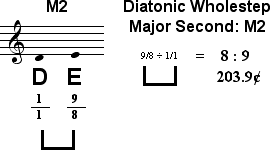
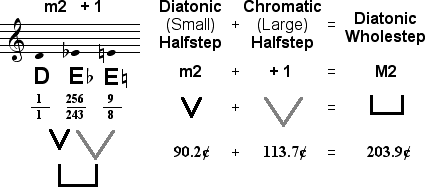
This way of looking at the structure will help us see relationships between the larger systems and this basic smaller one.

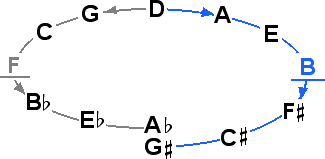




Having completed this analysis, we can move on to some larger systems, applying similar principles of analysis and referring to the smaller systems for comparison.
NEXT: 19 Tones